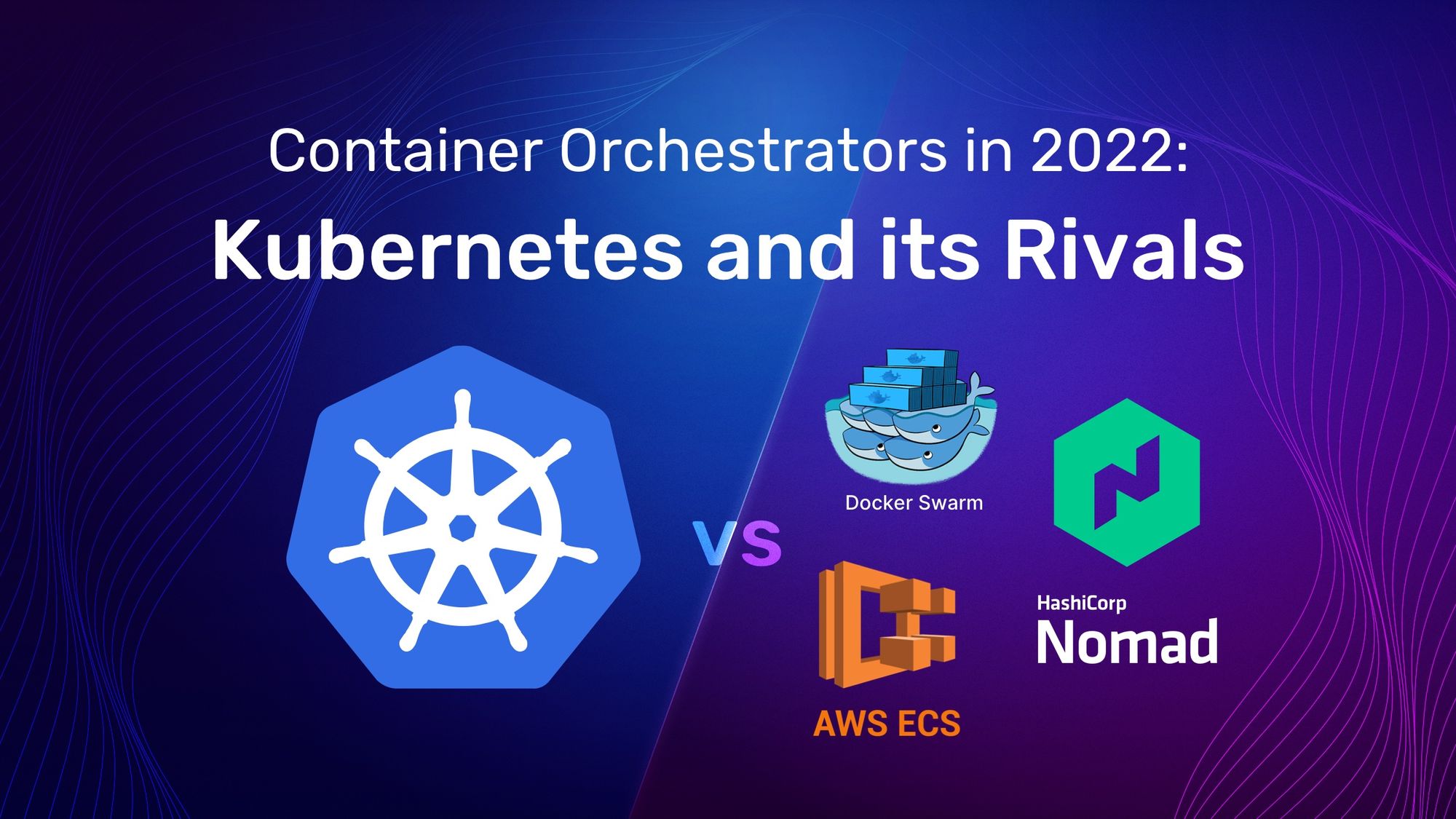Container Orchestrators in 2022: Kubernetes and its Rivals

As organizations broke monolithic systems into distributed microservices, Kubernetes has established itself as the industry standard. Container and Kubernetes adoption has truly gone mainstream, with their usage continuing to rise globally. A 2021 CNCF survey found that 96% of organizations are either using or evaluating Kubernetes.
Kubernetes is the most attractive orchestrator for organizations deploying microservices at scale. It is a well-developed, feature-rich solution with a diverse ecosystem of third-party tools and integrations built around it. Kubernetes is complex precisely because it addresses the complexities of deploying microservices at scale. Kubernetes is the industry standard for container orchestration.
While Kubernetes has won the war for container orchestration, other orchestrators have not yet disappeared. Alternatives including Docker Swarm, Nomad, and ECS are appealing for a variety of reasons. They are much simpler than Kubernetes and can be good choices for teams deploying small and straightforward use cases. It is far easier to stand up and maintain a Swarm cluster than a Kubernetes cluster. Kubernetes’ innate complexity remains a barrier to entry - not only for small organizations with fewer resources but also for large enterprises modernizing legacy, dinosaur applications.


Docker Swarm, Nomad, and ECS all offer thriving ecosystems of their own to tap into. If you built your technology stack around HashiCorp products, it can make sense to orchestrate your containers with Nomad. Likewise, if you committed to AWS early on in your cloud journey and adopted ECS before EKS joined the scene, there are benefits to leveraging ECS and its integrations with AWS. With Docker making a comeback, we can expect more features and integrations from Swarm in the future. Kubernetes’ dominance forced the evolution of the entire container orchestration landscape. Its alternatives remain in usage.
While just about everyone is using Kubernetes, applications running on Kubernetes typically represent less than half of an organization's services. As companies scale the number of clusters in their applications, they diversify the types of clusters being managed. It is very common for companies to deploy Kubernetes clusters in multiple clouds alongside Swarm clusters and legacy VMs on prem. Kubernetes may have won the war for container orchestration and is generally adopted for new greenfield projects, but it is consistently being used alongside alternatives.
While these multi-cloud and multi-orchestrator architectures are more resilient, flexible, and scalable, they are also far more complex to network. When a company manages a single monolithic application, things like configuration, visibility, and security are all relatively straightforward to set up. When a company starts running lots of different services for the same application, they start running into a number of issues.
Migrating clusters from one platform to another is challenging. Visibility and security become far more difficult in multi-cluster environments. Operations teams must maintain clear views of the lifecycles, configurations, and locations of their Services. Similarly, key security features like rate limiting and authentication are harder to configure and standardize in multi-cluster environments. When manual configuration is inevitably required, the likelihood of human error can lead to inefficiencies and vulnerabilities.
These challenges all warrant high-quality networking tools that provide visibility into different platforms and integrate with different container orchestrators. Traefik Enterprise is a unified cloud-native networking solution that brings together an API gateway, ingress, and service mesh in one simple control plane.
Traefik Enterprise integrates with the most popular container orchestrators, such as Kubernetes, Docker, OpenShift, ECS, Rancher and Mesos. Traefik Enterprise can be run anywhere, on-prem or in the cloud. Its enhanced dashboard provides visibility into the Traefik Enterprise cluster health and its routing configuration. With weighted round robin load balancing and nested health checks, users can manage traffic across heterogeneous applications including Kubernetes, Docker, and Nomad. It eases networking complexity for DevOps teams managing multiple container orchestrators in distributed applications.




